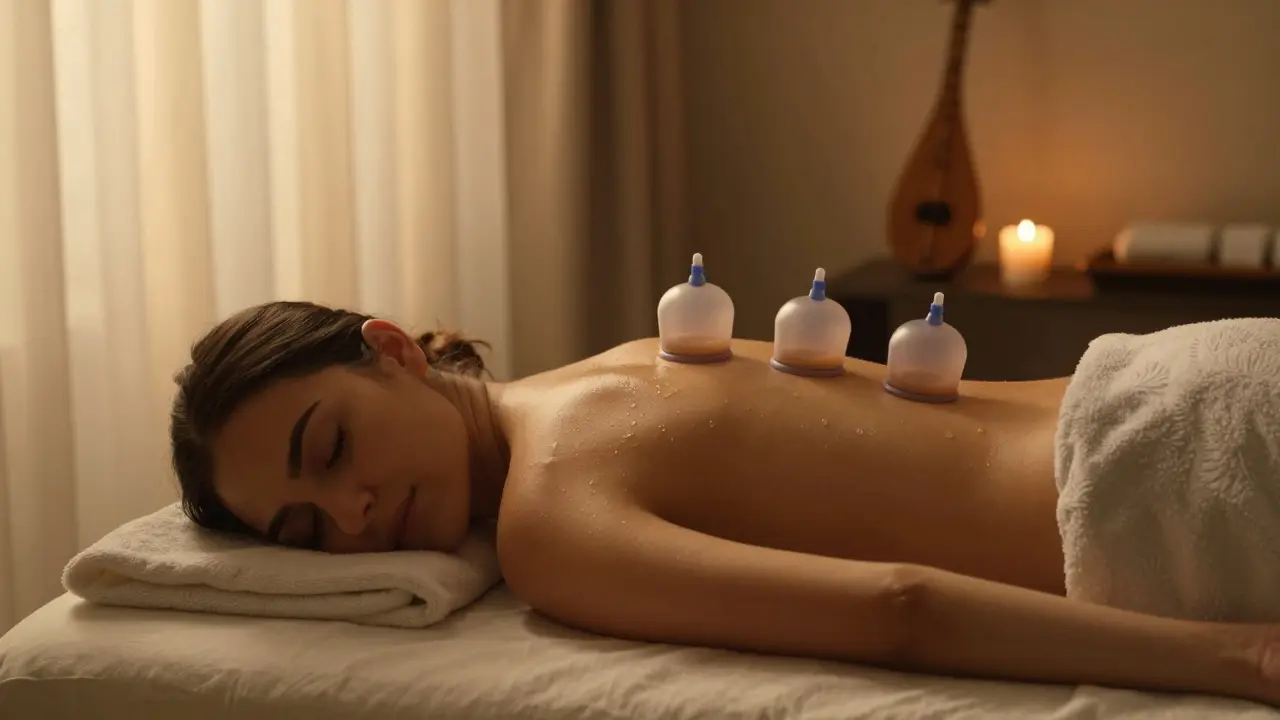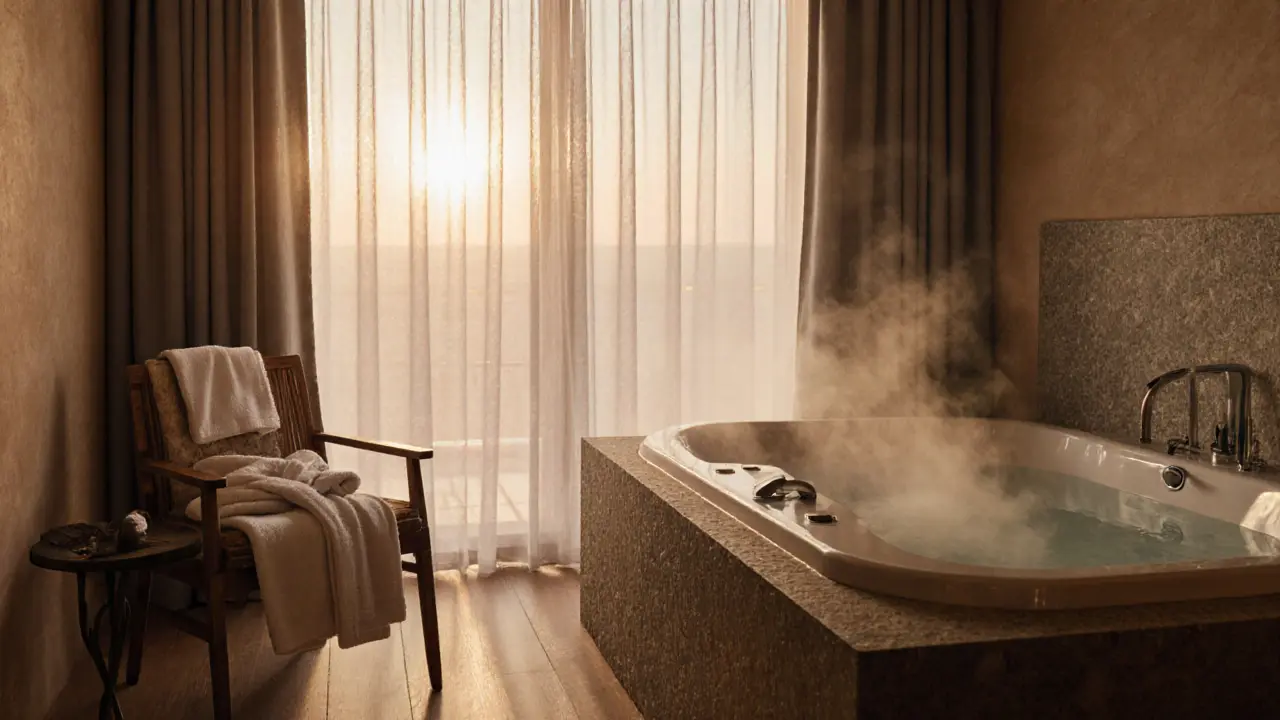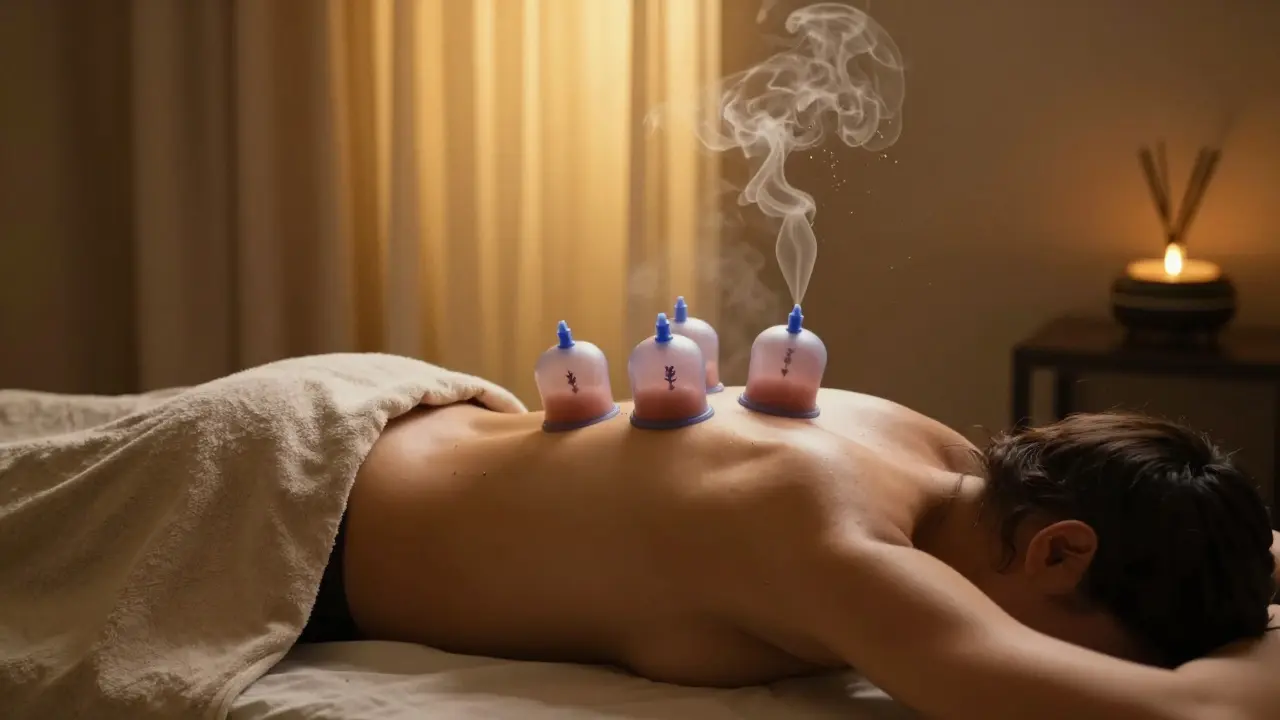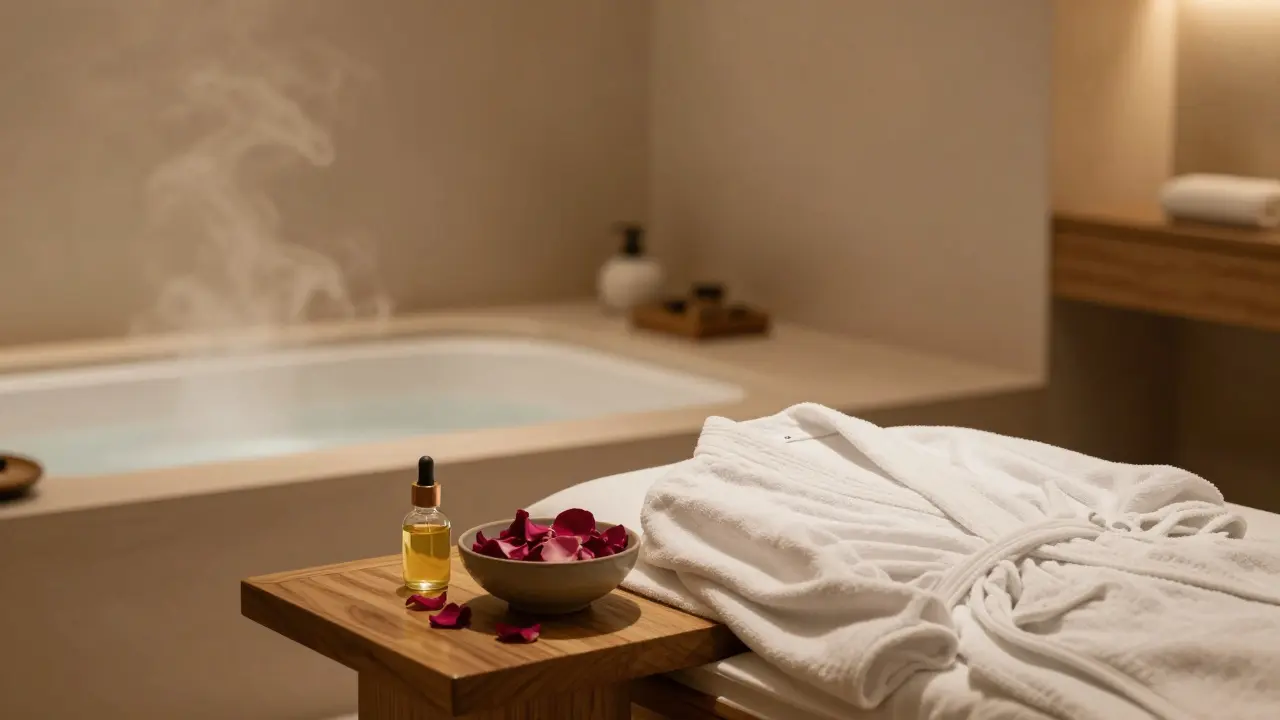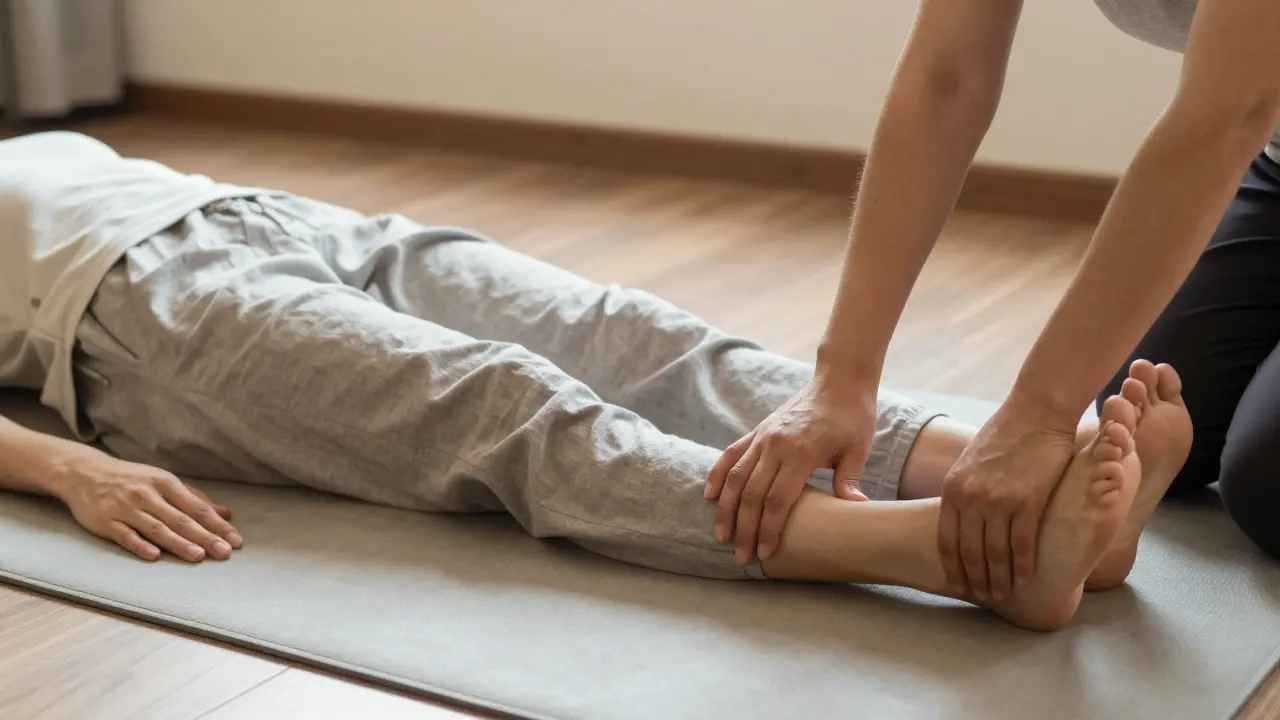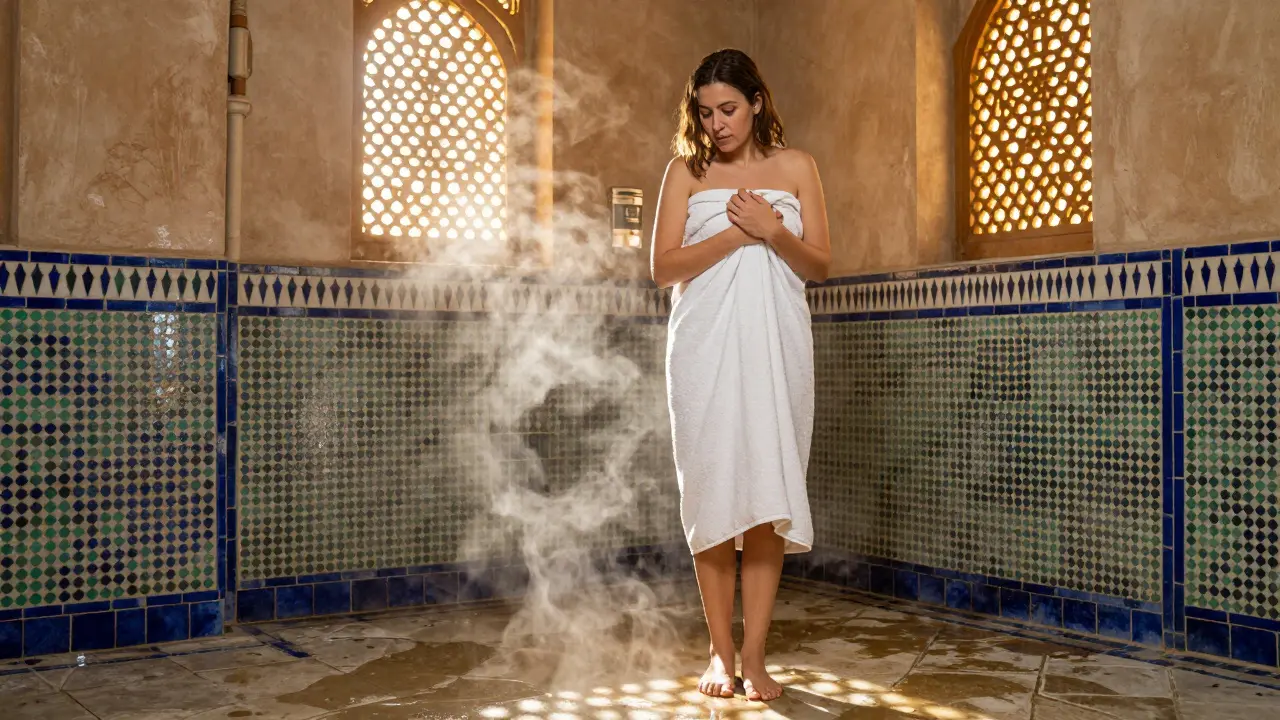What Does It Mean When Cupping Marks Are Dark? Your Comprehensive Guide
Picture this: you walk out of a spa, feeling lighter, looser—and now, you’ve got these dark, circular patches on your back. Curious looks and the question always pop up: what does it mean when cupping marks are dark? The topic keeps coming up online and in wellness circles, especially as cupping becomes a staple in modern self-care. If you’ve ever wondered why some people walk out of a cupping session spotless and others look like they wrestled a giant octopus, you’re in the right place. Let’s get real about the purpose of cupping therapy, the meaning of those dramatic marks, and how this ancient technique is making a huge comeback in today’s wellness world.
cupping marks—that’s the keyword you’ll want to remember. These round bruises have become a kind of wellness badge, especially in spas across places like Dubai. Some say they reveal what’s happening inside your body; others swear their color means nothing. There’s so much talk (and guesswork) about whether dark cupping marks are good, bad, or just a sign you had a strong session. In this guide, I’ll walk you through what we know (and what’s just hype), break down how those mark colors actually form, and give you practical tips if you’re thinking of trying cupping therapy yourself. We’ll clear up the myths and focus on facts—plus, you’ll find FAQs to answer the questions you wish you’d asked before your first session.
Ready to see what your cupping marks are really saying?
Understanding the Basics of Cupping Marks
Origins and History
Cupping therapy has roots stretching back thousands of years—think ancient Egypt, China, and the Middle East. Even people in 1500 BCE used versions of cupping for everything from headaches to aches after battle. In Chinese traditional medicine, it’s been a go-to method for moving what practitioners call “stagnant qi” (your body’s vital energy). The basic idea was always clever: by placing cups (usually made from glass, bamboo, or silicone) on the skin and creating suction, you could help release what’s stuck under the surface. This could mean tight muscles or just a lot of daily stress. Over time, the technique stuck around because folks kept reporting benefits: less pain, more relaxation, faster recovery. Today, the rise of spa and wellness culture—especially in cosmopolitan cities like Dubai—has brought cupping right into the spotlight. Even athletes and celebrities show off their marks now and then, turning a centuries-old remedy into a modern trend.
Core Principles or Components
At its heart, cupping therapy is about suction. Practitioners use cups that stick to the skin with either heat (think quickly lit flame to remove the oxygen, then placed on your back) or a handy suction pump. That negative pressure draws the skin and muscle up a bit inside the cup. This suction is what causes the signature cupping marks. Depending on how long the cup sits (usually 5–15 minutes) and how strong the suction is, you can get varying colors and shapes. Some therapists keep the cups stationary for traditional effects, while others move them around with oil for what’s called “moving cupping.” The goal, whether you’re in an upscale Dubai spa or a neighborhood wellness center, is to improve blood flow, help kick out minor toxins, and relax your body. It might look like magic, but it comes down to basic science: increased circulation and a local inflammatory response create the marks and, often, that satisfied chill after a session.
How It Differs from Related Practices
Cupping often gets tangled with other bodywork like massage or acupuncture. But here’s the subtle difference: massage usually presses down into the muscle layers from the outside, while cupping lifts the skin up, allowing more space for fluids to flow. Acupuncture uses fine needles to work on energy lines or trigger points; cupping creates its impact over broad areas with suction. There’s also “scraping” (gua sha), another method for increasing blood flow, but instead of pulling up the skin, it involves scraping the surface. See the table below for a quick snapshot:
| Practice | Key Feature | Primary Benefit |
|---|---|---|
| Cupping | Suction with cups | Promotes circulation, relieves tension |
| Massage | Manual pressure | Reduces muscle knots, relaxation |
| Acupuncture | Insertion of needles | Targets meridians, pain relief |
| Gua Sha | Scraping tool | Improves microcirculation |
Who Can Benefit from Cupping?
Cupping isn’t just for the ultra-flexible or the hard-training athlete. It appeals to a wide crowd: anyone who struggles with stubborn tension, wants to recover from a tough workout, or simply needs something beyond ordinary massage. Many beginners try it on a whim at a spa, while seasoned wellness fans seek out cupping for regular self-care. People with chronic pain or migraines, busy professionals on their feet all day, and even those feeling stressed or run-down find cupping helpful. However, not all clinics or spas are the same—always look for licensed therapists. And if you have skin problems, certain chronic illnesses, or are pregnant, it’s best to get an okay from your health provider before booking.
Benefits of Cupping for the Body and Mind
Muscle Recovery and Tension Relief
Ever had that “I slept on my neck wrong” feeling that just won’t quit? This is where cupping really shines. The suction improves local blood flow, which helps your body flush out minor build-ups—think lactic acid after exercise—and brings more nutrients to tired muscles. This gentle stretch under the cup can even trigger your nervous system to relax tight spots, making post-workout recovery a lot faster. Many spas in Dubai include cupping alongside deep tissue massage to make the effects last longer, giving overused areas of your body a much-needed break.
Boosted Circulation
One underrated perk: cupping wakes up your body’s microcirculation. If you’ve ever noticed your skin looks pinker or feels warmer after cupping, that’s the boost in local blood flow in action. Research suggests that this process can help bring oxygen and nutrients to skin and muscles that are usually neglected—especially useful if you sit at a desk all day or suffer from cold hands and feet. Over time, some regulars claim their skin looks and feels healthier; others just enjoy the post-cupping “glow.”
Support for Emotional Well-Being
It might sound a bit unexpected, but cupping isn’t just about the body—it’s a boost for the mind, too. Lying still while those cups work their magic is like forced meditation. It’s 15 minutes where you don’t have to answer emails, check your phone, or think about your to-do list. Some users say that regular cupping helps with their mood, eases general anxiety, and helps them sleep better. The gentle pressure and unique sensation can offer a soothing, cocooned feeling—a warm hug for your back, if you will. Combined with calming oils or peaceful spa surroundings, cupping can be a big mental and emotional reset.
Practical Everyday Applications
Beyond pain and wellness, cupping is showing up in beauty routines (think “facial cupping” for softer, fresher-looking skin), and corporate wellness programs aiming to tackle office tension. If you live a high-stress lifestyle or have a physically demanding job, adding cupping to your routine can keep you moving and feeling your best. Here’s a table breaking down key benefits:
| Benefit | Description | Impact |
|---|---|---|
| Muscle Recovery | Reduces soreness post-exercise | Faster, easier movement |
| Circulation Boost | Increases blood flow to skin and tissues | Improved skin tone, warm limbs |
| Relaxation | Promotes deep calm and stress relief | Better sleep, less anxiety |
| Flexibility | Loosens stiff joints and muscles | Better range of motion |
What to Expect When Engaging with Cupping
Setting or Context
Walking into a spa or wellness center for cupping is usually an ultra-soothing experience—think dim lights, relaxing music, and a heated massage table. In Dubai, you might notice a touch of luxury: fragrant oils, personalized temperature settings, or even herbal teas after your session. The therapist will ask about your medical history, what you’re hoping to achieve, and which areas are bothering you most. For those more adventurous, home cupping kits are also an option, but getting started at a professional spa is smart if you’re new. The scent of calming oils and the sense of stepping away from life’s chaos set the scene for what’s to come.
Key Processes or Steps
First, your therapist will pick the right cups for the area being treated—large cups for your back and thighs, smaller ones for your shoulders or even your face. After cleaning the skin, a little oil may be applied to help the cups glide if moving cupping is planned. Then, each cup is placed on the skin, either by quickly heating the air inside so it forms a seal as it cools or using a hand pump for gentle suction. Most sessions last 10–20 minutes, with cups either staying still or slowly moving. You’ll feel a strong tug, sometimes a mild pinch, but rarely sharp pain. When the cups come off, you’ll be left with marks that range from pink to deep purple.
Customization Options
Cupping’s not a one-size-fits-all deal—it’s wildly adaptable. Therapists can adjust suction strength, the number of cups used, and where they’re placed. Some people prefer dynamic “moving cupping,” while others want traditional fixed points to work on stubborn knots. If you’re worried about the marks showing, ask for lighter suction, shorter sessions, or focus on areas usually covered by clothing. Got sensitive skin? Let your therapist know before starting, as they can use special techniques or limit cup time to avoid irritation.
Communication and Preparation
Open conversation is key. Before any cups touch your skin, be clear about any allergies, recent injuries, or medical conditions. It’s smart to avoid heavy meals and alcohol before your session; drink plenty of water so your body recovers smoothly. Afterward, rest and keep the treated area clean—a bit like after a deep massage. Follow any extra advice from your therapist. If you’re self-conscious about those cupping marks, plan your session so they have time to fade before big events (marks usually last from a few days to two weeks).
How to Practice or Apply Cupping
Setting Up for Success
If you’re going the DIY route, set yourself up somewhere quiet with lots of space to move around. Have clean towels handy, use a mirror for visibility (especially on your back), and only use well-cleaned cups approved for skincare. Keep your surroundings calm—soft music or a diffuser can really help.
Choosing the Right Tools
Not all cups are created equal. For home use, silicone cups are simple and easy to clean; glass or plastic sets work well, too. If you’re going to a spa, make sure your therapist is certified and uses professional-grade tools kept super clean. Check reviews from other clients online as well. Opt for reputable brands if you’re buying your own kit; poorly made cups often lose suction or cause skin irritation.
Step-by-Step Guide
- Cleanse and dry your skin thoroughly.
- Apply a little oil to help the cups glide.
- Place the cup on the treatment area. Pump the cup or use heat as directed.
- Let it stay in place for 5–10 minutes if you’re new. Monitor for any discomfort.
- Release the vacuum gently by pressing on the skin or lifting the edge.
- Clean both the cups and your skin again after the session.
- Stay hydrated and avoid exposure to very hot water or harsh scrubs for a day or so.
Tips for Beginners
- Start with a single cup and lower suction to test your body’s reaction.
- Try cupping on easy-to-reach, low-visibility spots to build confidence.
- Never apply cups to wounds or sensitive, inflamed skin.
- If you’re working with a partner, communicate openly about what feels right.
Safety and Ethical Considerations
Choosing Qualified Practitioners
Don’t be shy about checking qualifications—your body deserves the best care. Ask for certifications, hygiene practices, and years of experience before booking. Top spas in Dubai (and worldwide) display licenses openly and welcome questions about technique.
Safety Practices
| Practice | Purpose | Example |
|---|---|---|
| Clean Equipment | Prevent infection | Sterilizing cups between clients |
| Consent Forms | Ensure agreement | Allergies, treatment goals |
| Low Suction for Beginners | Reduce risk of injury | Short session, mild cup strength |
| Open Communication | Address problems early | Stop if discomfort occurs |
Setting Boundaries
It’s always okay to ask for breaks, lighter suction, or for cups to avoid certain areas. Your comfort matters most. Good therapists always listen and adapt to feedback—never feel pressured to push through pain. If you’re trying self-cupping, never use it on the face or neck initially, and always err on the side of caution.
Contraindications or Risks
Some people should hold off on cupping or check with a healthcare provider first: if you’re pregnant, have bleeding disorders, are on blood thinners, or have skin conditions like eczema. Avoid areas with open wounds, sunburns, or acute injuries. If you notice severe bruising, blisters, or lingering pain, see a professional—sometimes, less really is more.
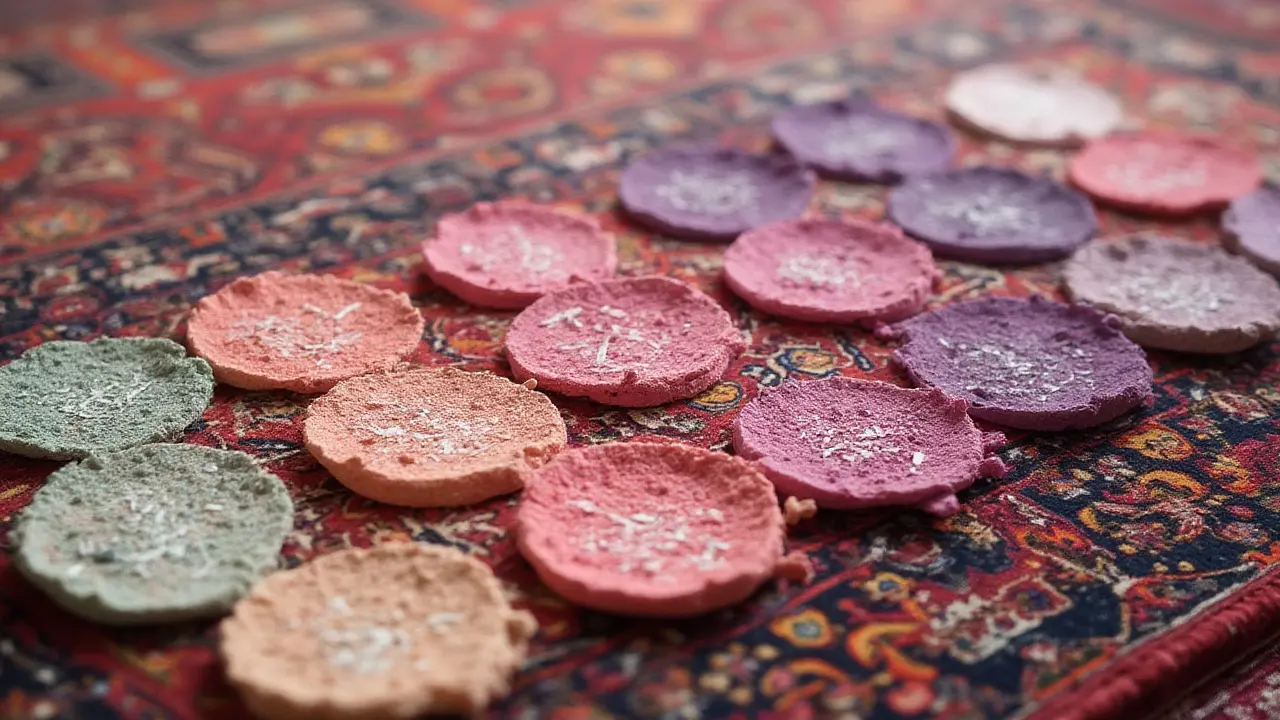
Enhancing Your Experience with Cupping
Adding Complementary Practices
Want extra benefits? Pair cupping with practices like gentle stretching, meditation, or aromatherapy. A lot of wellness fans swear by combining cupping with yoga or deep-breathing exercises to help those relaxed muscles get even looser. Even something as simple as sipping herbal tea post-session helps your system cleanse and restore faster.
Collaborative or Solo Engagement
Cupping is flexible: enjoy a quiet solo session, or make it a couples’ self-care ritual. Some spas offer packages for friends or partners, making the experience social (and more fun to swap cupping stories!). Communicate openly if working together at home—trust is key for a comfortable, positive session.
Using Tools or Props
Upgrade your cupping game with accessories: warming pads, essential oils, and soft towels all help. For facial cupping, small silicone cups are gentle and more precise, while larger glass or acrylic cups are perfect for the back or legs. Always clean everything before and after use. For travel, there are lightweight silicone sets that go wherever you do—yes, even on vacation!
Regular Engagement for Benefits
Consistency is the real secret. Instead of an occasional treat, many regulars find that once-a-month cupping helps keep their bodies and minds in better balance. But everyone’s body is different—notice what works for you, and build your routine around it.
Finding Resources or Experts for Cupping
Researching Qualified Experts
The internet is full of options—spa chains, boutique wellness studios, and solo therapists. Look for reviews that mention specific expertise and cleanliness. In Dubai, the Dubai Health Authority (DHA) oversees many wellness practices; clinics should comply with their rules. If you travel or move, filter your search for “licensed cupping therapist” to limit risk.
Online Guides and Communities
There’s a big world of support online. Reliable websites (look for those recommended by health authorities or reputable wellness organizations) offer both video demos and written guides, from setup to advanced techniques. Forums and social media groups provide space to ask questions and get advice from other users.
Legal or Cultural Considerations
Different places regulate cupping therapy differently. In most UAE spas, only licensed professionals can practice on clients. Always honor local regulations, and stay sensitive to privacy—sharing cupping marks is up to you. In some cultures, visible marks are a proud signal of self-care; in others, it’s more private—either way, it’s your choice.
Resources for Continued Learning
If you’re the type who loves to dig deeper, look up books on traditional Chinese medicine, watch certified courses, or join workshop days. Many spas offer beginner group sessions to help you ask questions and learn safely. Always double-check that sources rely on credible health or educational sites.
FAQ: Common Questions About Cupping Marks
Cupping marks get everyone curious—no shame in asking! Here are the most common and important questions people ask about these now-famous circles:
What to expect from cupping?
You’ll feel tight pulling or suction where the cups are placed, followed by a deep sense of relaxation or lightness. Afterward, expect round marks that can range from pink to dark purple. These usually fade in a week or so. Many people notice looser, less stiff muscles and a calmer mind by the end of their session.
What happens during a cupping session?
After a quick medical check, your therapist applies cups to your skin, forming suction for about 5–15 minutes. You’ll relax on a table, maybe with soft music. The suction draws the skin up, boosting circulation and causing those circular marks. Some practitioners may move the cups, while others keep them in one place for deeper effect.
How does cupping differ from massage?
Cupping lifts the skin and tissue up, making space for blood and lymph to flow more freely. It’s the opposite of massage, which presses and kneads the muscles down. While both are relaxing and support muscle recovery, the after-effects and mark patterns are unique to cupping.
What is the method of cupping?
Most therapists use either heat (fire cupping) or suction pumps to create negative pressure inside glass, plastic, or silicone cups. They place the cups on oily, clean skin and leave them for a set time. The suction naturally causes blood to rush to the area, which is what creates the signature marks. It can be done stationary or moving, depending on need.
Is cupping suitable for beginners?
Absolutely—it’s beginner-friendly, especially at reputable spas with trained therapists. Start slow, with light suction and short treatment times. Communicate openly about your needs, and never hesitate to ask questions or set limits. Home cupping is possible, but always follow instructions, start with low suction, and keep things extra clean to avoid irritation.
Why Cupping Marks Are Worth Exploring
A Path to Rejuvenation
Cupping therapy isn’t just a fad—it can help shake loose physical tension and mental stress you didn’t even know you were holding. The marks themselves are simply a sign your body is responding to treatment, not a problem to hide.
Try It Mindfully
If you’re seeking a new way to care for your body or want to add an edge to your wellness routine, consider trying cupping mindfully. Choose reputable therapists, start slow, and see how your body responds. Don’t hesitate to check with your doctor if you’re unsure.
Share Your Journey
Tried cupping or have thoughts about those dark marks? Share your experience in the comments! Want more wellness tips or curious about spa techniques like cupping? Follow my blog for the latest. Ready to explore new self-care practices? Dive in and let us know how it goes!
Some links may be affiliate links, but all recommendations are based on research and quality.
Word Count
Word Count: ~2,165
Suggested Visuals
- Photo of a person with fresh cupping marks in a modern spa setting (showing both ambiance and results, ideally Dubai-themed)
- Close-up of different colored cupping marks (light pink to dark purple) on the skin
- An image of a therapist placing glass or silicone cups on a client’s back
- Side-by-side image: traditional cupping tools (bamboo/glass) vs. modern silicone/plastic cups
- Infographic highlighting benefits of cupping vs. massage or gua sha

Suggested Tables
- Comparison of Cupping vs. Related Practices (includes acupuncture, gua sha, massage)
- Table of Key Benefits of Cupping (muscle, circulation, relaxation, etc.)
- Table of Safety Tips for Cupping (practice, purpose, example)


